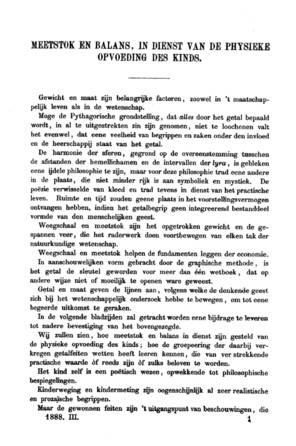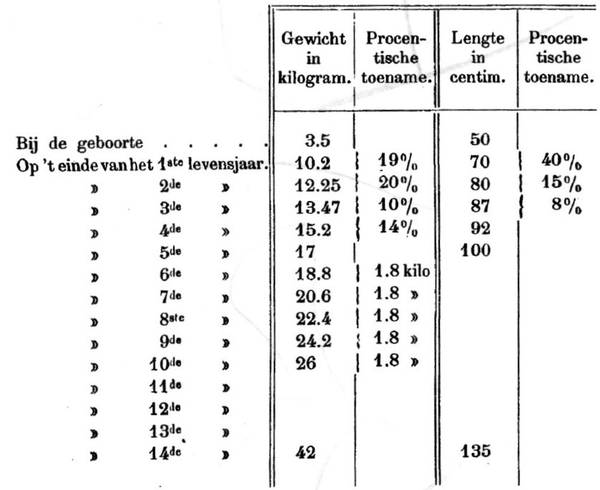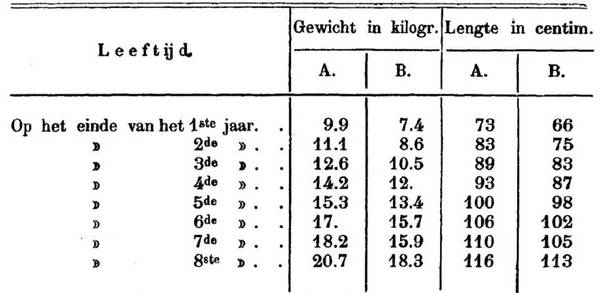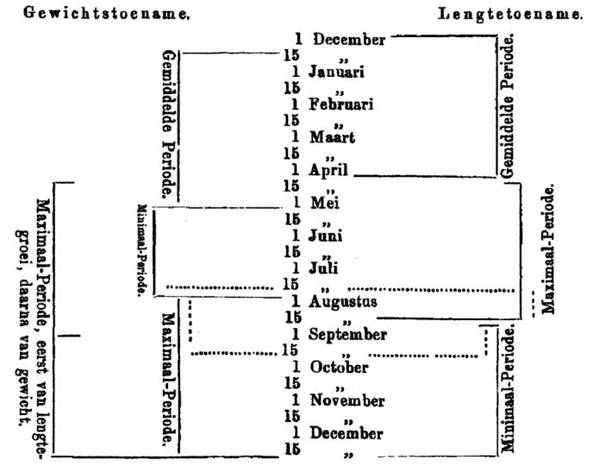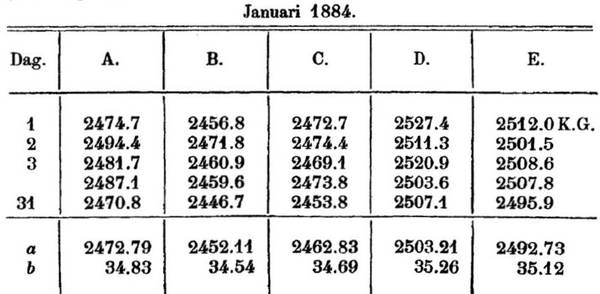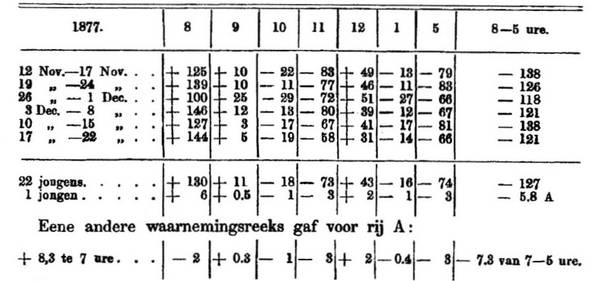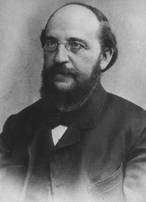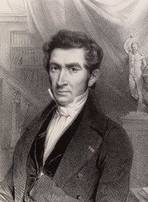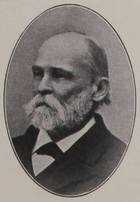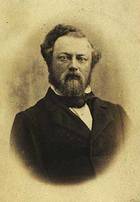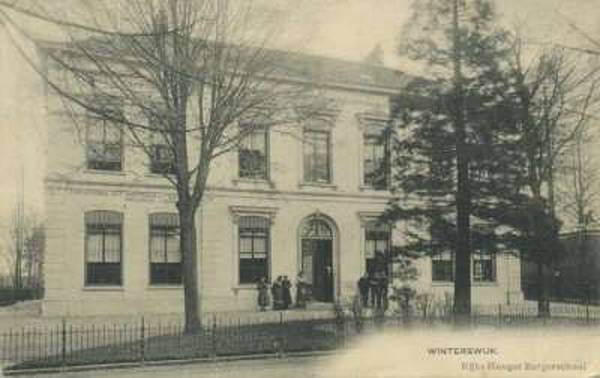Article in the monthly magazine “De Tijdsspegel” in March 1888
By the Dutch school director R. E. de Haan
Malling-Hansen’s Research Highlighted and Appreciated in the Netherlands.
Following Malling-Hansen’s striking presentation at the International Medical Congress in Copenhagen in 1884 and his publication in Danish and German of “Fragments I”,”Fragment II” and “Fragment III” in the period 1883-1886, there was quite a stir and considerable interest in the international medical press and in the general public about his findings.
Our website documents some of these reactions, and we keep finding new articles, mostly dating from the 1880s.
One of the most appreciative and thorough comments during that period was written by the Dutch school director R. E. de Haan and published in the monthly magazine “De Tijdsspegel” in March 1888.
The article covers 27 pages, and instead of making a very time-consuming translation of the entire article, we opted for the second best, i.e. a summary in English of each page. Even with this limitation, the summary does provide a good idea of the full article and certainly conveys the fact that de Haan profoundly admired and appreciated Malling-Hansen’s groundbreaking work.
Our esteemed member, Jos Legrand, made the translation from Dutch to English and I assisted in the attempt to turn the text into good English.
I also added some footnotes.
Translation from Dutch of the summary of an article in ”De Tijdspiegel ”[1], Winterswijk, March 1888, by Romke Everts de Haan[2].
p.1
PUTTING THE MEASURING ROD AND THE SCALE TO GOOD USE FOR THE PHYSICAL NURTURE OF THE CHILD
Numbers and measurements indicate the curves along which the reflecting mind has to move in scientific research in order to achieve the desired result.
p.2
Weighting of infants has become increasingly commonplace. This is because the comfort of the child can decline without anyone noticing it, and here the scales can help us prevent abnormal developments. Physical development takes off particularly during the first weeks of the life of the infant, and the physical constitution at that point in time can be a defining moment for the physical condition later on, as well as the mental development of the child. Compared with the situation at birth, the brain has a long way to go before full maturity and development.
The most significant normal curves for infant growth have been presented by a French researcher named Bouchaud and by a German by the name of Fleischmann. However, they differ from each other as a consequence of differences in relation to body size as well as nourishment.
p.3
Based on these normal curves, indicating the normal growth rate, a mother can assess the growth of her child. The importance of the weighting taking place under identical circumstances, as well as comparison with the two normal curves, is shown by an example. In the example the nourishment is being adapted each time the weight of the child drops below the curves.
p.4
It is also important that the weightings are being undertaken continuously. The table shown is by Uffelmann[3] and shows weight increases percentage-wise as well as height-increase percentage-wise during the first fourteen years of a child.
p.5
The maximum height is achieved when we reach 20-22 years of age and amounts to ca. 170 cm and a weight of 42 kilos. Uffelman’s data are based on the measurements of, among others, the Belgian Quetelet[4], whose method is questionable. “Usually measuring and weighting were carried out with groups of persons of different age-groups and who were considered as being normal.”
It would be more accurate to perform individual weightings, something which is difficult but not impossible. Boarding and educational institutions are perfectly suited for the purpose. Thus, good experiences have been gained with this in Sweden and Denmark (e.g. Wretlind[5], Vahl[6] and Jensen; however, in these cases the individual weightings only took place one or four times per year).
p.6
In Denmark Mr Malling-Hansen has gained quite some recognition for his work. He calls his research notes ‘fragments’. The third fragment appeared last year entitled: ‘Perioden im Gewicht der Kinder und in der Sonnenwärme’. The Danish observer is above all looking for the causal relationship with other phenomena. To what extent he has led himself to want to see more than is given will be left for critical remarks later on. The tables appended to this work are a masterpiece in terms of execution, accuracy and ingenuity. The work of other observers is discussed briefly, among them Landsberger...
p.7
...and von Russow. The latter presented figures about the relationship between good nutrition and the first months of life, specified for infants who were breast-fed, respectively nourished with artificial food. In 1882 the Institute for the Deaf-Mute in Copenhagen decided on a new diet plan.
p.8
Since May 1882 all girls and boys have been weighed daily. As from the second half of February 1884 the daily height was also measured. Initially the weightings were done by Malling-Hansen himself, but subsequently teachers were assigned to the task. The cost of instruments and services were borne by the government and partially by the Carlsberg Foundation[7]. The height of each child was measured individually, but as for the weight pupils were measured by groups; each group was weighed separately. Already back in 1877 Malling-Hansen started with the measurements, and as from 1882 the daily weighting of all individuals was introduced. Two booklets were published in 1883 and 1884: ‘Periodicity in Children’s Weight’ and: ‘Daily Weightings of my Pupils’. ‘Fragment III’ is based on the evening weight of boys, measured between May 1882 and February 1886 and on the daily measurement of their height from February 1884 until February 1886.
p. 9
The weight measurements take place in the evening before the boys go to bed, the height measurements in the morning after they have had lessons for one hour.
Study of all tables on a yearly basis showed that the greatest increase in weight took place in the autumn. After that the weight increased slowly until the end of April, after which followed a weight decrease. Sometimes there was no change for some days.
p.10
Malling-Hansen calls these periods the maximum period (95 days), the average period (131 days) and the minimum period (81 days). Apart from that the holiday period is from July 16 until September 12. The presented tables show that the daily gain in weight in the maximum period is three times greater than during the average period. The maximum period starts already during the holidays.
p.11
The conclusion is that early summer holiday periods are very desirable in relation to weight increase. In terms of conclusion Malling-Hansen formulates the following rule: The body weight of 9- to 15-year old boys is subject to three different periods in a calendar year: a maximum, an average and a minimum period.
Similar laws can be formulated concerning the height development, although there is, of course, no period of height diminishing. Also in this respect three corresponding periods are found, however their course is different.
p. 12
Due to the summer holidays, measurements start around September 12 and show a minimum height development until November 22. After that follows an average period until March 28, followed by a maximum period which hasn’t yet been completed early in July.
The height increase was on average 40 mm in the course of 291 days of measurements. Compared to the minimum period, the daily growth is twice as much in the average period and 2,5 times in the maximum period.
p. 13
Data.
During the maximum period for weight increase the increase of height is so little that this period can be called the resting period for height development.
p.14
The minimum period of weight and the maximum period of height largely fall within this category, too. The maximum period in the growth of height is the resting time for the weight increase, the latter even becoming negative. Perhaps height increases at the expense of weight. Apparently all nutrients have been expended. During autumn they settle in the body again.
Weight increase during the maximum period must be seen particularly as an increase in girth. Loss of weight in the minimum period is a consequence of the decrease of the girth.
After Malling-Hansen had discovered the reverse correlation between the increase of height and girth the idea came to his mind that something similar could be applied to other forms of organic growth as well. Trees became his next field of investigation.
According to the prevailing opinion among plant physiologists cell proliferation is most active in spring. If that holds true, then there would be no contrast in terms of periods of growth of height and thickness in the floral world.
He started measuring trees from May 4, 1885.[8]
p. 15
In May there was almost no change in girth. From the beginning of June an increasing growth of girth can be observed, with a maximum growth of thickness in mid July. The growth in terms of height, recognizable from tree buds, starts in April and ends mid June. The growth of thickness starts in June, with a maximum at the end of June, after the growth of height has stopped.
Increase of the height and thickness of trees shows a great resemblance with the alternate periods in the growth of children (see table 2).
Table 3 presents weightings of 71 boys between December 1, 1883 and February 28, 1884.
p. 16
Data
p. 17
Data
p. 18
Each child loses 0,57 kilos when it sleeps and gains 10 mm in height. During daytime the opposite effect takes place.
From the preceding data it appears that:
1) fluctuations in weight and height within 24 hours must be attributed to local influences;
2) fluctuations within the span of one week are also dependent upon local influences;
3) three periods that occur within a calendar year are probably related to the seasons.
When these inconsistencies in the statistics are eliminated, some fluctuations still remain. These are related to meteorological circumstances. There is a correlation between atmospheric heat and the weight of children.
p.19
Malling-Hansen got his data from the Meteorological Institute, and his findings were compared with identical weightings at the Royal Reformatory School (Det Kongelige Opfostringshus[9]), situated one km away from his own school. The results were identical.
p.20
Early summer has a favourable influence on the growth in height, whereas autumn is more advantageous for increase in girth. Also, the growth of children depends on increasing or decreasing temperatures during the year. During the increasing warm temperatures in spring and early summer the maximum growth in height is pursued, and during the period of decreasing warm temperatures in autumn the maximum period of growth in terms of thickness. However, there is no causal relationship between a certain amount of heat and the weight increase.
p. 21
The heat fluctuations do not influence the weight fluctuations, however both sets of variations are the result of one and the same cause, of an unknown factor X.
X is not influenced by the seasons. X remains the same in heat, frost, sunshine etc. The atmospheric electricity, geomagnetism, or the ozone level of the air also does not affect X. According to Malling-Hansen there must be a greater natural law at play, which has a strong influence on organic growth. The only common cause must be the heat emission of the Sun. In order not to be dependent only on fluctuations of temperatures as they take place in Copenhagen, The Meteorological Institute[10] had supplied him with data from, among other places, Vienna, Vidi in Congo and Port Dover in Canada.
p. 22
The results were not clearly in harmony, sometimes even opposite, but reasonable arguments could be found for that. “That in spite of the heat in India fluctuating similarly with heat in Copenhagen and in North and South America in the same way, it is certainly a curious phenomenon in meteorology; just as it should provoke the astonishment of the biologists that the increase in the weight of children would fluctuate in accordance with the air temperature in those places. The whole thing leads us to the conclusion that there is a common causal factor for all the heat variations around the globe. That this causal factor is independent of the seasons is proven by the graphs from Paramaribo and Cordova, sites with antipodal seasons in relation to Copenhagen and Vienna etc. That common causal factor is to be found in the heat of the sun. Hence, the heat radiated from the sun is subject to variations and fluctuations, which have a regular course.”
p.23
In search of the unknown factor X Malling-Hansen believes that “the growth of all children in the world fluctuates in the same manner with the sum total of atmospheric heat”. Yet another assumption: “The growth of all organisms on the planet, from the smallest to the largest creature, from the simplest to the most complicated organism, is in a state of never-ending fluctuations of intensity, which run parallel to the sum total of heat of the entire atmosphere and is in unison with the variations of the heat eradiated from the Sun to the Earth.”
However, the solar heat is very much fluctuating and never reaches the organisms in its full purity. Hence the solar heat in itself is not the causal factor of the variations of the fluctuations on Earth.
p.24
X does not fall under the category of physical forces such as e.g. gravity. Neither is X the local heat or the heat of the Sun itself, nor from other forms of energy emanating from the Sun. X doesn’t fall under the category of physical energy of the light rays; also electricity and magnetism must be excluded. Therefore X is an unknown kind of power, which contributes to organic growth.
Malling-Hansen calls this unknown power “growth energy”, having its origin in the Sun or in the ethereal world. “In the latter case the growth energy varies with the density of the ether, which ultimately is conditioned by heat of the Sun.” His final conclusion is that “all organic functions are subordinated to the same law, having its origin in the same cause.”
The practical utility is not at the researcher’s foreground; his main concern is to find knowledge and truth, and the practical utility will follow by itself.
p.25
It is important to know that the weighting results depend on the day and hour in which they take place.
p.26
By means of the discovery of the yearly period, it seems possible to do something about individual growth abnormalities at an early stage. Through better nutrition, reduced mental work-load and improved hygienic conditions during the period of maximum growth in girth there are possibilities open to regain the right balance between height and thickness for the category of lanky and muscle-weak children.
Better nutrition during the maximum period of growth in height and a rigorous diet during the following maximum period of growth in girth could, conversely, have a favourable effect on short and obese children.”
Malling-Hansen also advocates for allowing abnormal children to travel in order to help them obtain a more healthy growth. Depending on their physical stature they should be brought to a more southern region or to a region with a cooler climate. In any case summer holiday periods should coincide with both of the two maximum periods.
p.27
Malling-Hansen pleads for more vacation for the mental and physical well-being of children. Daily measurements and weightings could contribute to the solution of many kinds of issues in the area of hygiene. For these purposes further research is needed, but “the endeavour has to be spread to all countries in the world”.
The author of the article ends with praising Malling-Hansen in a comparison with other pastors in the world, devoted as he is to the welfare and improvement of mankind.
Footnotes:
[1] JMC: De Tijdspiegel, a monthly magazine with articles about theology, philosophy, literature, science and education. The Dutch original title is: “Meetstok en Balans, in Dienst von de physieke Opvoeding des Kinds.”
[2] JMC: Romke Everts de Haan, 1833-1899, school director in Winterswijk. See further information in the fact sheet and a photo of the school where de Haan taught; fact sheet by Jos Legrand.
[3] JMC: Julius August Christian Uffelmann, 1837-1894, German physician and medical historian. Uffelmann specialized in paediatrics and hygiene and published important textbooks and handbooks in this field. Professor and as from 1883 Director of “Institut für Hygiene”.
[4] JMC: Lambert Adolphe Jacques Quetelet, 1796-1874, Belgian mathematician, astronomer, naturalist and statistician. Among his numerous and very diversified contributions to science are his measurements of the human body and its growth (Anthropometry). Quetelet is the inventor of the Body-Mass Index (BMI). He was influencial in introducing statistical methods in the social sciences.
[5] JMC: Erik Wilhelm Wretlind, 1838-1905, Swedish physician, writer, member of parliament and prohibitionist. Editor of the medical journal “Eira” 1882-1897.
[6] JMC: Martin Vahl, 1827-1887, physician and director of the Frederik VII Foundation at Jægerspris, Denmark, a home and boarding school for girls.
[7] JMC: We have not yet found solid documentation concerning the government support; but from the Carlsberg Foundation we know that RMH received 4000 DKK in 1882 and 4000 DKK in 1885.
[8] JMC: Some of the trees Malling-Hansen used for his research are still standing – and growing – in the garden behind the Institute for the Deaf-Mute in Copenhagen!
[9] JMC: “Det Kongelige Opfostringshus” - The Royal Reformatory School – is a Danish boarding school in Copenhagen, established in 1753. In 1880 the school moved to a newly constructed building in Randersgade, close to the Royal Institute for the Deaf-Mute.
[10] The Danish Meteorological Institute, DMI, was established in 1872. The evidence that Malling-Hansen had organised this cooperation with the DMI points our society in the direction of a new research angle: There ought to have been ample contacts and correspondence between RMH and the DMI in the 1880s, and presumably evidence about this can be found in the Danish National Archives.
Fact sheet by Jos Legrand:
Romke Everts de Haan (Wirdum 1833-Deventer 1899) was the first director of a HBS-school in Winterswijk, a small provincial town in the east of the Netherlands near the German border. These schools were a secondary school type in the Netherlands, existing between 1863 and 1974. De Haan led the school from 1870 until 1898 when he retired due to illness. Beside his directorship he taught chemistry, physics, zoology and botany, as well as political economy and bookkeeping. De Haan wrote several schoolbooks on geology and mineralogy and is seen as a pioneer in that field. He also translated some foreign books and articles into Dutch, among which those from Jac. Moleschott and Ludwig Büchner. He wrote about Darwin, and about Tycho Brahe, the Danish astronomer. His article about Malling-Hansen’s growth theory in the Tijdspiegel, fits well in that open minded magazine. It was launched in 1863 and existed for thirty years. Besides theology and philosophy it dealt with literature and science, and with education and pedagogics. Items on emancipation could be found in it too.
Literature:
P.C. Molhuysen en P.J. Blok (red.), Nieuw Nederlandsch biografisch woordenboek. Deel 1.
A.W. Sijthoff, Leiden 1911
www.dbnl.org/tekst/molh003nieu01_01/molh003nieu01_01_1628.php

